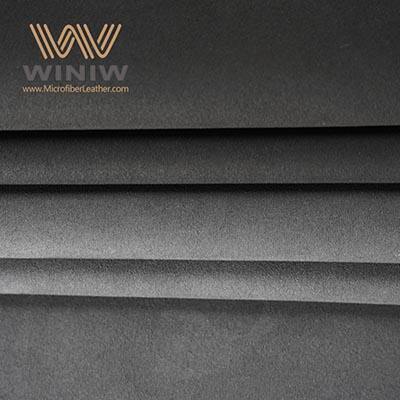În lumea modă și materiale care se schimbă în permanență, pielea vegană a apărut ca un jucător important, provocând normele tradiționale de producție a pielii. Ca WINIW, un producător principal chinezesc specializat în Piele artificială pentru fabricile care creează produse din piele, noi înțelegem importanța acestei schimbări și implicațiile sale asupra sustenabilității. Să ne uităm mai de aproape la detaliile pielei vegane și să evaluăm dacă poate fi cu adevărat durabilă din punct de vedere ecologic.
Înțelegerea pielii vegane: o prezentare concisă
Pielea vegană, cunoscută și sub denumirile de artificială, sintetică, falsă sau imitație a pielii, este fabricată din materiale care nu folosesc niciun produs animal. Tipuri comune includ poliuretanul (PU), clorură de polivinil (PVC) și piele microfiber. Fiecare varietate oferă caracteristici unice, satisfacând diferite nevoi și aplicații în industria modă și accesorii.
Amprenta ecologică a pielii vegane
procese de producție : Producția de piele vegană implică mai puține substanțe chimice dăunătoare și mai puține emisii decât producția tradițională de piele, care necesită adesea procese de bronzare ample, folosind substanțe dăunătoare. Prin utilizarea materialelor sintetice, pielea vegană își propune să reducă amprenta ecologică asociată cu producția de piele.
Eficiență a resurselor : piele vegană exploatează materii prime pe bază de petrol sau pe bază de plante, oferind potențiale beneficii de eficiență a resurselor. Cu progresele tehnologice, producătorii explorează din ce în ce mai mult materiile prime durabile, cum ar fi materialele plastice reciclate și opțiunile biodegradabile, reducând în continuare impactul asupra mediului.
Deșeuri și reciclare : În timp ce pielea tradițională este biodegradabilă, natura sintetică a pielii vegane poate reprezenta o provocare pentru reciclare. Cu toate acestea, se depun eforturi pentru a dezvolta opțiuni de piele vegană reciclabile, asigurând astfel că materialele la sfârșitul vieții pot fi reutilizate, în loc să ajungă la depozitele de deșeuri.
Compararea între PU, PVC și Piele Microfibru
În cadrul pielii vegane, PU, PVC și microfibru au fiecare caracteristici distincte și considerente legate de mediu.
Piele PU : Cunoscută pentru versatilitatea și durabilitatea sa, piesa din PU poate imita aspectul și textura pielii autentice. Este adesea mai prietenoasă mediului decât PVC, deoarece folosește mai puține substanțe chimice nocive în producție și este mai ușor reciclabilă.
Piele PVC : Deși piesa din PVC este durabilă și accesibilă din punct de vedere financiar, este de regulă mai puțin prietenoasă mediului din cauza procesului de producție care implică aditive toxice. Reciclarea PVC-ului poate fi dificilă, făcându-l o opțiune mai puțin durabilă comparativ cu PU și microfibru.
Piel Microfiber : Fabricată din fibre sintetice ultra-fine, piesa din microfibru oferă o miștoacă excepțională și capacitate de respirație. Este adesea produsă folosind materiale reciclate, făcând-o o alegere mai conștientă din punct de vedere ecologic.
Avantajele Pieței Artificiale Dincolo de Sustinabilitate
Mai departe de beneficiile sale ecologice, Simulare de piele oferește numeroase avantaje care atrag consumatorii și producătorii moderni.
Considerații Etice : Piele vegană este în concordanță cu valorile consumatorilor care acordă prioritate modei etice, evitând exploatarea animalelor în procesul de producție.
versatilitate și design : Versatilitatea pielii sintetice permite o gamă largă de proiecte, culori și texturi, răspunzând gusturilor și tendințelor diverse.
Cost-Eficiență : În multe cazuri, pielea vegană este mai accesibilă financiar decât cea autentică, ceea ce o face o opțiune atractivă pentru producători care caută materiale de înaltă calitate fără să se ruineze.
În concluzie, piele vegană reprezintă o alternativă atrăgătoare față de piele tradițională, oferind durabilitate ecologică, considerente etice și numeroase avantaje practice. Ca WINIW, suntem angajați să promovăm industria prin oferirea de opțiuni de piele vegană de înaltă calitate și sustenabilă, care să răspundă nevoilor evolvente ale clienților noștri. Prin adoptarea inovației și durabilității, ne propunem să creăm un viitor în care modă și mediul înconjurător pot coexista armonios.

 EN
EN








































